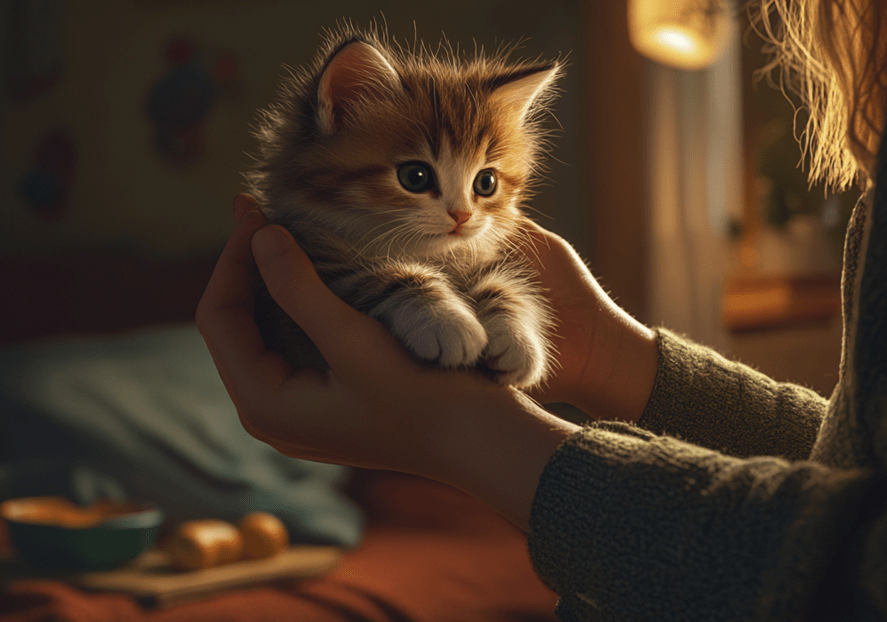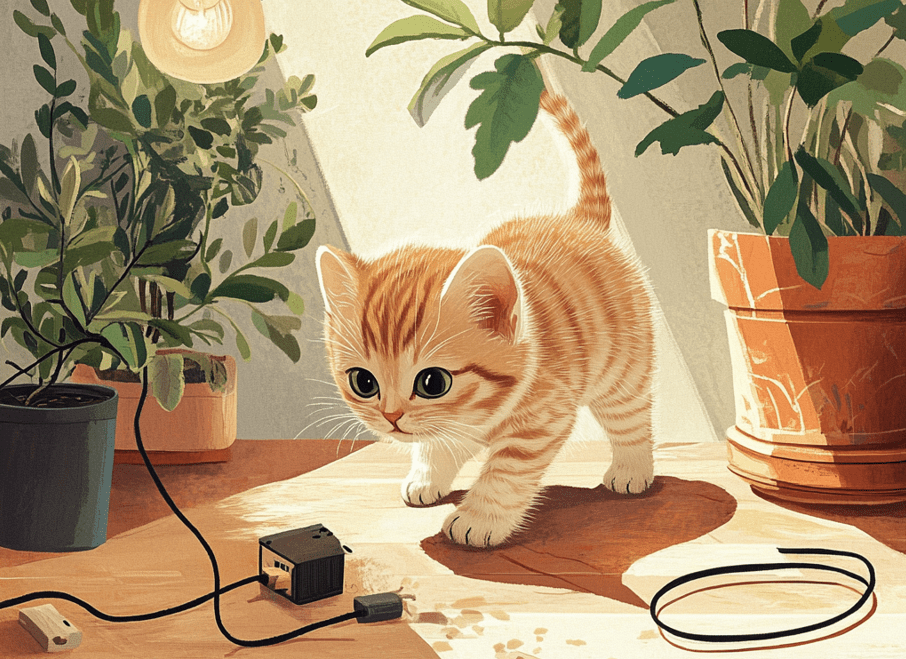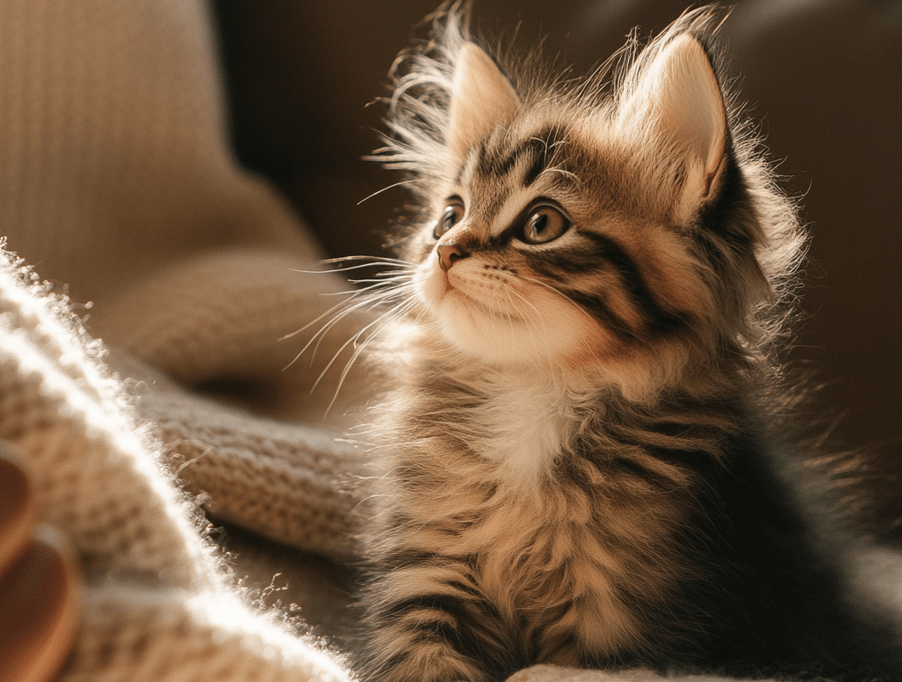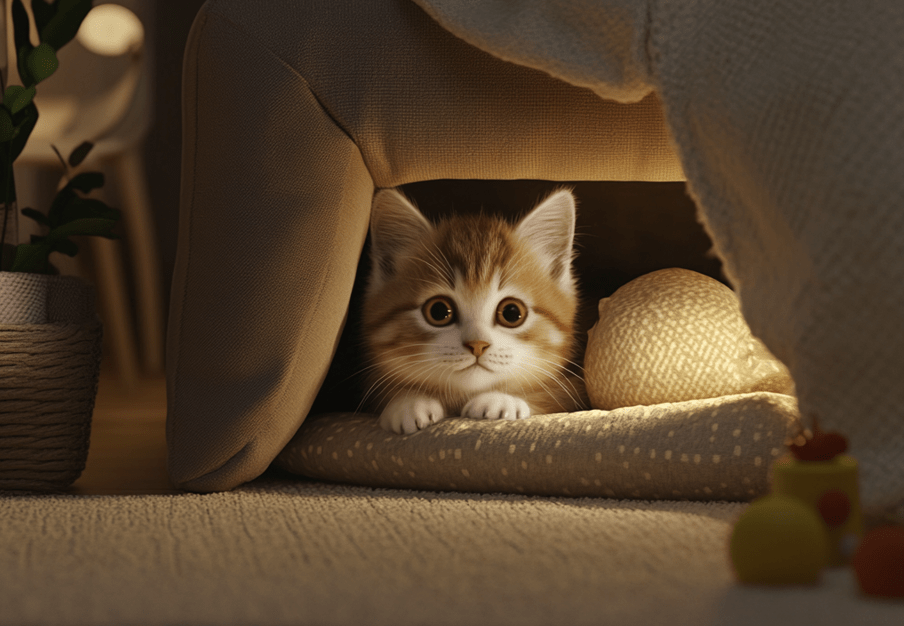
Post-adoption care for kittens is very important for a kitten’s proper well-being. The first 30 days that you spend with a new cat are the most important because it will determine if your relationship will last for years to come, or end before it ever really starts. From the perspective of your cat, this is a time during which trust can be earned and strong emotional ties established before returning to life at home with a stable routine for their health.
During this time, you need to make your kitten feel comfortable in their new surroundings. All of those things that you do to help him acclimate — feeding schedules, litter box habits, playtime routines. Through patience, routine and love you can create a bond that will keep your cat from trying to find an alternate path back home.
Now if you are adopting a cat these most of the rules still apply and will help set your relationship with them off on the right foot.
To watch the summary of this article, just watch this video-
Allow Your Cat to Settle In
Getting a new cat is an adventure, but I realize it will need to become accustomed to a new living situation. She may feel a little out of place and anxious at first due to the new surroundings. Therefore, your cat may not show her playful return or full personality as soon. For the first few days, it is completely natural for her to seem shy or withdrawn.
According to the experts, you should rather provide your cat with full-time access and let her explore in an entirely self-guided manner. Don’t push it instead, have her come to you when she’s ready. This gives the cat an aspect of control which can be quite important in helping her to build confidence and reduce anxiety. In time, and with a little patience and gentle cajoling on your part your pet will settle in happily to be more relaxed/opened up for bonding. This slow and steady method makes transitioning more balanced, setting the framework for a trust relationship.
Keep Your New Cat Separate from Current Pets at First
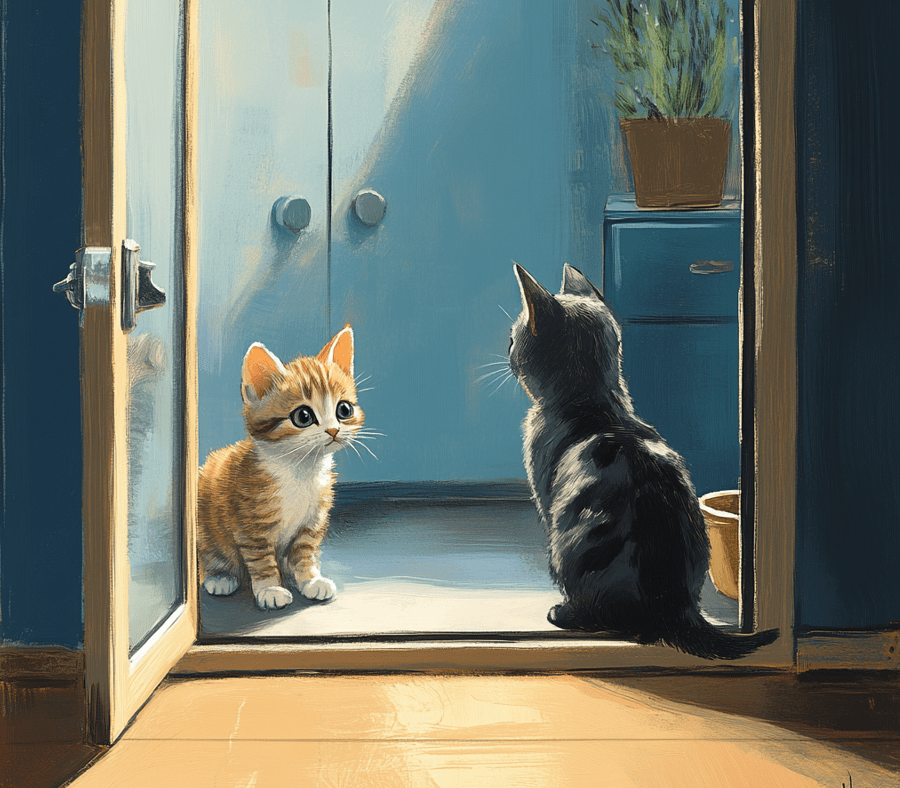
It is important to keep a new cat separated until she settles into her environment and routine, when introducing your existing cats.
This helps to reduce the number of interactions your existing pets have with the new cat, which is essential that it gets overcome for each one. It is relatively easy to set her up in a room out of sight so that she can just hear the resident cats, and this will help her feel safe when introduced gradually.
It is typically advised to have a separation period of about two weeks. After all, if that is the case then it can be quarantined for prevention to check whether or not there are respiratory infections and parasites on the new cat.
With the new cat being comfortable after two weeks, you should consider how fast it integrates. There is no set amount of time for how long it will take her to completely settle in.
Develop patience within this transitioning period. Give your new cat the space to settle in and start off on a good note.
Prepare a Special Area Before Your Cat Arrives
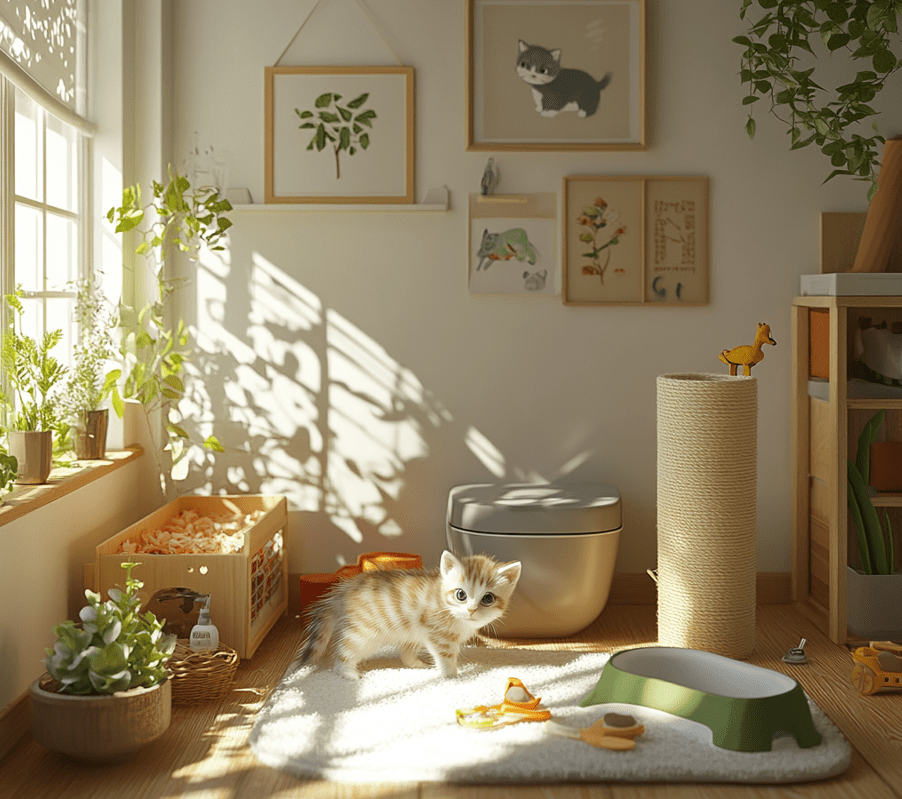
TIP: You need to have a room ready for your new cat, so she can acclimate and feel like home quickly. Have all of your supplies ready, such as a litter box, food bowl and water bow before you bring her home. Initially, slowly introduce her to a smaller area rather than the whole house. It is one way to reduce added stress cautiously.
Many cats love to have their very own space, so pick out a spot just for her. Needless to say, having her crate provides comfort and gives her a chance to acclimate in an unfamiliar environment. After a few days or even weeks, expand the areas she has access to bit by bit so that you help your cat re-establish her territory at her own speed.
To begin with, it may work to confine the cat in a bedroom where you house the litter box in one corner and food/water bowls in another — rather than giving your home over immediately. How it works is you only let them into a little part of the house, and then gradually introduce more rooms at a time so as not to overwhelm your cat but also to make sure they know where their place is in case she needs something.
Make Sure Your Cat is Properly Enriched
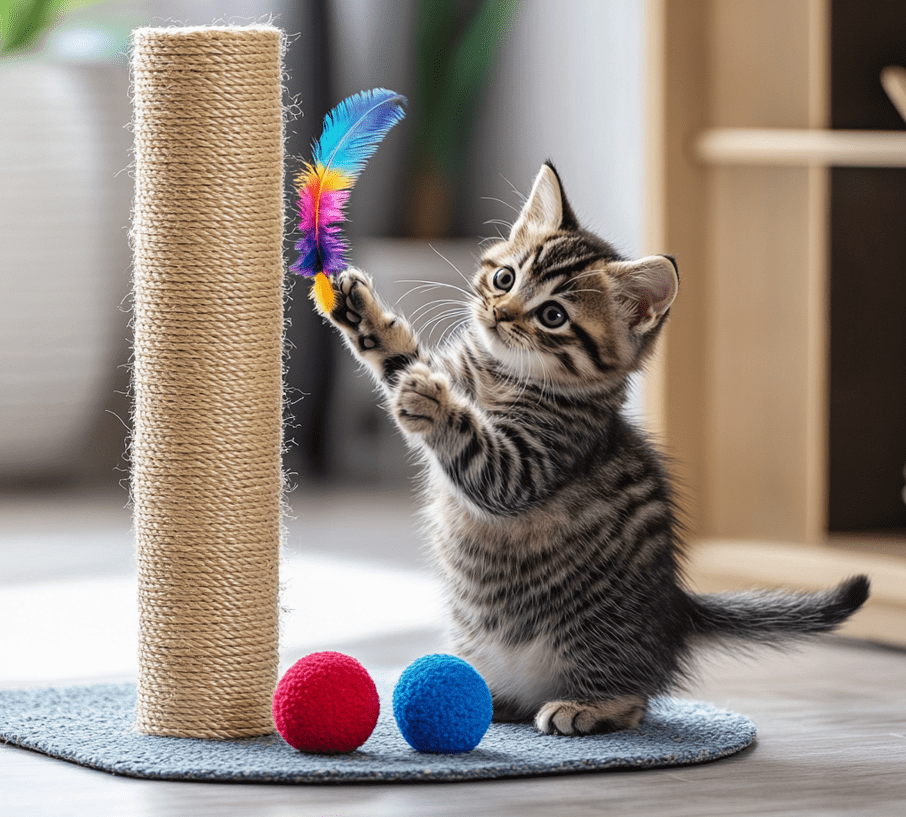
In addition to supplies, offer your kitty lots of interactive toys until you figure out what appeals to them. Providing a variety of toy styles and playing with your cat from an early age can help promote positive interaction as well as improve the bond between you two.
Besides toys, ensure that your cat has various scratching places. It is ideal to provide multiple configurations like standing scratching posts with rope and a horizontal scratch board of alternate texture or orientation.
Vertical sisal posts, for example as seen in the Frisco scratching tower above are ideal if your cat likes to stretch out while sharpening her claws whereas some cats prefer horizontal options like The Original Scratch Lounge.
You may not know just how much your cat is missing out on in her diet unless you offer a variety of selections for her to taste. Your cat is more likely to be flourishing when she feels safe, secure and likes what you give her.
Create Structure and Habit
Ensuring your new cat smoothly transitions into her home means providing a consistent structure and routine. Cats do best with routine, they are more comfortable and less stressed when they know what to expect so feedings should be at set times, grooming routines kept regular along with play. The fact that the routine times make it easier for hairball removal and other pet care practices also encourages better living habits, which in turn means your cat will be happier to see you.
Maintain a Regular Cat Grooming and Dental Care
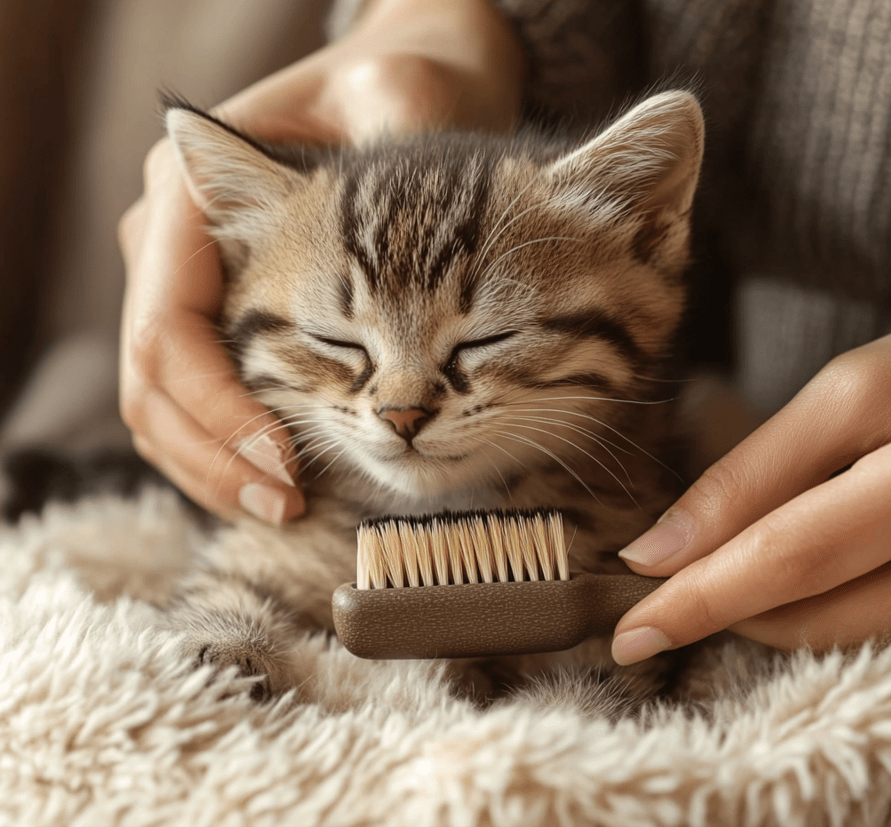
Proper Grooming & Dental Care is important to keep your pet clean. Wait until your new cat becomes fully acclimated to their surroundings and comfortable before introducing these activities.
If you are new to brushing your cat’s teeth, do it in stages. First, try a little bit of cat toothpaste on your finger for a couple weeks to allow cats to associate the taste. Be very patient with your cat, never rush the process so you can brush them over time.
Use cat toothpaste (never human toothpaste, as it is harmful) Brushing regularly, their teeth as well attention should be given to their fur. The key is to keep it fun by taking your time and training with treats, or praise for kitty rewards.
Cat Training and Playtime
Training sessions are also bonding time with your cat. For instance, teach your cat to come when you call its name as a simple task.
To accomplish this, call your cat by name while sounding excited and throw down a treat or their favorite toy. Reward your cat and reinforce the behavior by repeating this multiple times a day.
That said, in training — always respects the pace of a cat. When your cat does something right, for example using the scratching post instead of your couch — reward him with a treat or maybe one of his favorite toys so that he perceives learning as fun rather than punishment.
Introduce Your New Cat Food Little By Little
If you are adopting a cat you must slowly introduce new food as part of their permanent diet. It should be made over 5 to 7 days gradually, otherwise there might develop gastrointestinal inflammation.
If your cat has a medical history like that, or if you want to change the diet of the food for another reason, it is best to consult with your veterinarian about what type of food will be better adapted and how long it should take until making this transition.
When choosing a new cat food, put them in high quality foods that have meat as the main ingredient. It is advisable to provide a mixture of canned and dried food where high-protein canned meat outweighs dry cat food in large part. By doing so, it reduces the buildup of tartar on teeth with time.
Building a Relationship with Your Veterinarian

A vet who you trust is critical when taking on a feline partner. Pet owners need to look for a veterinarian that they are comfortable approaching, and one who is willing to take the time necessary to answer their questions regarding cat care and health.
Behavior problems should be referred to a board-certified animal behaviorist (CAAB) and possibly, veterinary behaviorists.
Key areas for cat owners to discuss with their veterinarians include grooming, feeding at set times of day or free choice; type and amount of food your particular pet needs based on its life stage (kitten, adult, senior), exercise opportunities,& what changes in health may indicate illness. They should also talk to cat owners about litter box use, including whether the cats are using it and how often they recommend cleaning it; common household toxins and potential hazards for those who care for their kitties.

